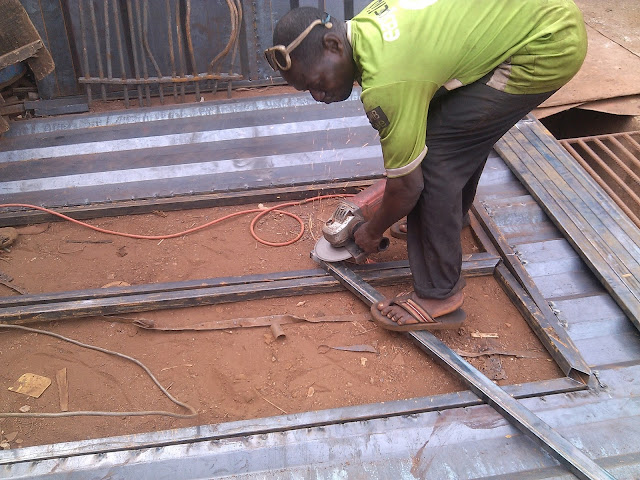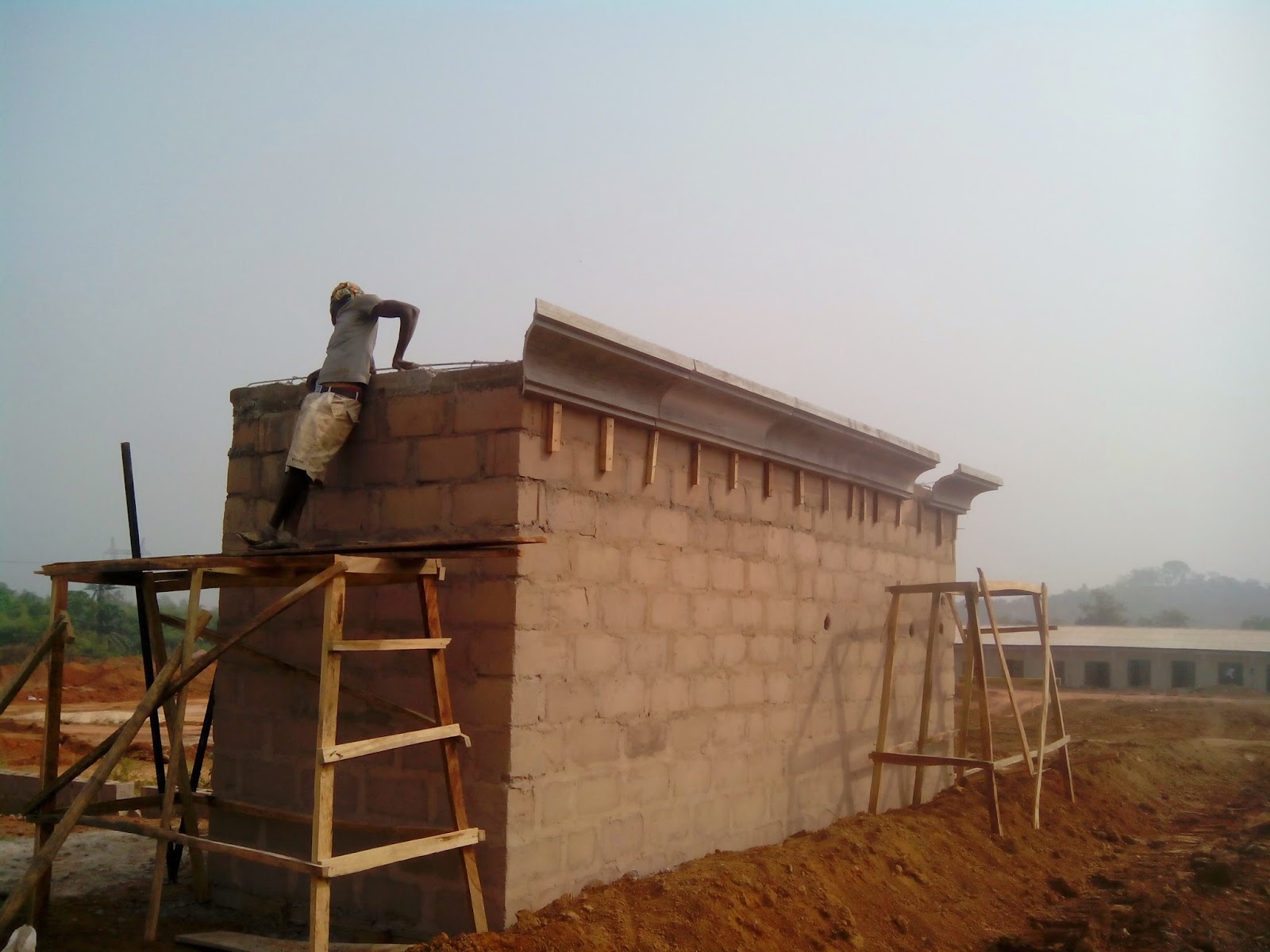posted by
Kosi Emmanuel Chukwujindu
 |
| Concrete fascia detail sketch by Arc Jude Uche; M.D /C.E.O Geometrix Consultants |
Conventional Nigerian builders will construct a wooden/metal formwork to the shape of the desired fascia right about the roof edge/building wall, install the reinforcement bars and cast the whole volume with concrete. well this is the 'text-book' thing to do, right?
Unfortunately, The problem with this method is that it typically consumes much more materials (steel, concrete and woodwork) and when the building(s) is a large one or are numerous, it becomes simply impractical and time consuming.
Goodnews is; the Architects at
Geometrix have over the years through experience under the leadership of the meticulous Arc. Jude Uche, developed an alternative method of constructing the concrete fascia. This method (as in sketch above) involves a pre-cast moulding of the fascia and a systematic fastening on exposed reinforcemnet bars sticking out from already existing roof beam using 6mm binding wires.
step 1: ROOF-BEAM: the traditional roof beam which is done right around on top of the last course of block, is done, but the 4- reinforcement bars are not completely covered with concrete yet, the top two are exposed in order to receive the binding wire that will be used to fasten the pre-cast fascia.

step 2:
PRODUCTION: moulders are vigrously moulding the concrete fascia on site using only cement and sand. (NB: this eliminates the need for reinforcement bars in the curved concrete fascia (CCF). they are allowed to cure and set, on the ground before cutting and lifting to avoid breakages. the final product is quite heavy. tiny openings are provided at intervals to allow for passing of binding wires.
step3: CUTTING TO SHAPE: once the concrete fascia has set (usually 36 hours after molding) it can then be cut into desired lengths according to the building corners. a typical piece would be 4' - 6' long. The cutting is done with a concrete sawing machine. the same type used to saw through block walls.
step4: INSTALLATION: After the cutting, two workers lift up piece by piece, insert the binding wires and with the help of in-situ scaffolding, climb and actually fasten the wires on the
two top exposed bars in the already made roof beam.
step 5: STRAIGHTENING & FINAL CASTING:
the straightening is done externally using a long plumb device and then held in place by wooden supports along the body of the wall. The binding wire that has been passed through openings on the pre cast concrete fascia is tied onto the top exposed bars tightly and is then covered with a second layer of concrete to hold it in place forever.

step 6:
JOINT TREATMENT:
The final step is to 'tack' the joints properly with same binding wires and short pieces of wood which help prevent the different piecs from shifting until the final casting is done. they will be removed once the concrete sets. the thin openings at these joints will be covered with neat mortar and painted.
ADVANTAGES OF PRE-CAST CONCRETE FASCIA:
i). reduced volume of concrete.
ii). elimination of reinforcement bars in the fascia.
iii). reduction in overall weight of the fascia.
iv). same result as in-situ cast, sometimes even better!
v). If production begins early enough, Its installation takes less time.
vi). reduced cost of production due to elimination of materials such as reinforcement bars and wooden form work.
LIMITATIONS OF PRE-CAST CONCRETE FASCIA
i). shortage of trained staff, may delay work
ii). curing time may delay work where production is not started early enough.






